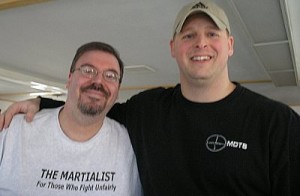
On 8 December, 2012, I had the privilege of attending a six-hour “Small Knife Skills” class with Chris Fry of MDTS. What was particularly interesting about this opportunity is that I took, years ago, a previous version of the same class with Chris. It was then called “Defensive Folding Knife.”
The class has since evolved, reflecting Chris Fry’s own training and experience. Where once the folding knife was highly emphasized (for obvious reasons — tactical folding knives have long been the standard of personal carry and protection with blades), Chris has shifted the focus to a much more generalized platform. Armed with anything pointed (a pen, a folding knife, a small fixed blade), the student may use the methodology imparted in “Small Knife Skills” to engage in self-defense to good effect.
When I attended Defensive Folding Knife, the class was held in the clubhouse of a shooting range in Otisco, NY. I remember that it was extremely informative, and that Chris was as I had come to find him in all the firearms classes I took with him: knowledgeable, engaging, friendly, and above all, extremely vigilant about safety. I remember learning Chris’ STAB methodology for drawing and deploying a knife that day, too — Slap, Tuck, Access, Brace. Chris still uses this mnemonic today.
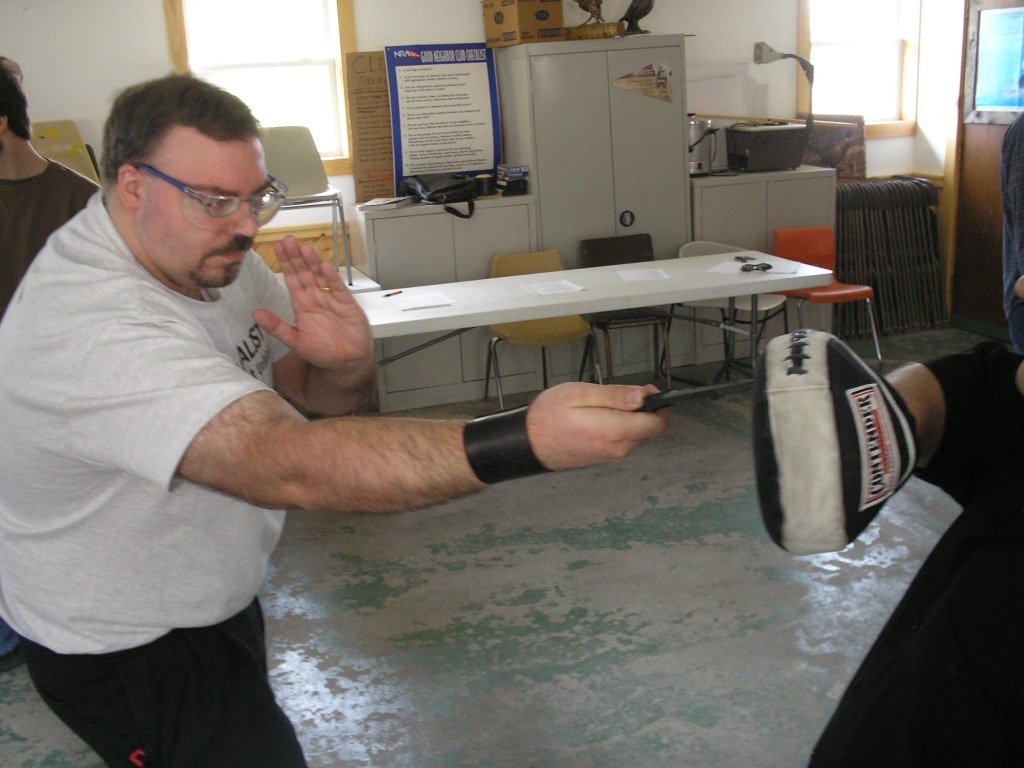
As before, I brought a guest with me to the class: my sister-in-law, a beginner in knife combatives and through whose eyes I was able to watch the class with a fresh perspective. This time, though, the seminar was held in the beautiful facility that is AR15.com‘s headquarters in Farmington, New York. I have lived in New York all my life and been aware of Arfcom for many years… and had no idea its HQ was practically in my back yard.
The class began with a lecture component, in which Chris covered the conceptual framework for self-defense, preparedness, and what he called the “modern personal protection problem” of close quarters combat with tool-using assailants who may or may not present themselves in numbers. Along the way, Chris dispelled several myths about criminal assault while framing that problem. Specifically, he emphasized that criminals don’t care what skill level the defender has. They are focused on getting close to you and delivering their planned assault while avoiding injury and capture.
Chris explained the justifiable use of lethal force, including the legal concept that an attacker must have ability, opportunity, and intent to deliver potentially lethal force before you may use lethal force against him — and then only if all other options (castle doctrine notwithstanding) have been precluded. He discussed the context of deploying using an edged weapon and broke it down into six simple components: dropping your weight, using a default defense (the mechanics of which he demonstrated and which students tested), driving into the assailant, moving into a position of dominance and escaping to a more favorable position (whereupon the timing necessary to deploy and apply the knife comes into play).
The STAB method was review, for me, and I remembered this part of the previous class quite well. The idea is to make sure you can identify precisely where the folding knife sits in the pocket while, from a stable platform, you get a firm grip on it and protect it against your body with your knife side forward (for greater reach). Only once braced is the knife opened.
Of course, all of this becomes moot when using a fixed blade, which can be more quickly drawn and more easily used. Chris is an enthusiastic advocate of small fixed-blade carry and, after pressure testing the techniques taught in group exchanges, the advantage of a small fixed blade over a folder is only too apparent. Still, the mechanics of the folding knife are part of the class, for many of us will continue to carry and use tactical folding knives from habit and for greater social acceptance.
All firearms and live blades were removed from the training area prior to class. This is the attention to safety that I have come to expect from Chris. All participants were frisked to make sure no one forgot anything that might endanger a classmate.
Students practiced accessing the folding knife (using folding metal drones) while dealing with an incoming “attacker.” They were also given a simple set of targets: the face, particularly the eyes, and the “fork” between the legs. The grips used were a simple forward and reverse with the thumb closed (a “caveman” grip). Footwork was kept simple but included quartering (in quartata). Strikes were limited to simple thrusts, hooks, and backhand slashes. Forward slashes were discouraged because this opened up the student’s defensive posture. Underhooks, overhooks, and a few other simple methods were also taught, for use when clinched up with an attacker and fighting for a better position from which to draw the knife.
The lion’s share of the class was devoted to working with these mechanics against resisting opponents — namely, our fellow students. Burning too much energy in one exchange quickly produced many groans and wheezes during subsequent exchanges. Eye protection was required and face masks were offered. Those students who used full face protection went that much harder at the goal of getting an “attacker” off them and keeping that attacker at bay by stabbing that attacker in the face and eyes.
The rest of the class, then, was a blur of different drill permutations, as class members worked footwork, scenarios, timing, and ranging their attacks. The training knives used were the excellent hard foam trainers by Nok Hodges of “Amok!”. While this meant there were no major injuries, the trainers hit hard enough to cause pain when taking repeated stabs and slashes to the limbs. In my case, one of them even drew blood from the back of my hand during a particularly spirited exchange (after which my training partner admitted he was thinking of “going for the door” as I went at him).
The best gauge of the class and Chris’ efficacy as an instructor was my sister-in-law’s reaction. She absolutely loved the class and was extremely pleased with the practical methods and foundation knowledge presented. I have harangued her at length about my opinions concerning self-defense, but it was only after this class that she said to me, “I finally understand what you’re always talking about.” That is a testament to Chris’ teaching abilities and ample evidence of the seminar’s validity.
Chris Fry and MDTS occupy the top tier of reality-based training available in New York State. If you are ever presented with the opportunity to train with him, I urge you to do so. It just may, as it has in my case more than once, save your life. At the very least it will leave you competently prepared for something we all know is a possibility but which we hope we’ll never encounter: a real-life self-defense situation.
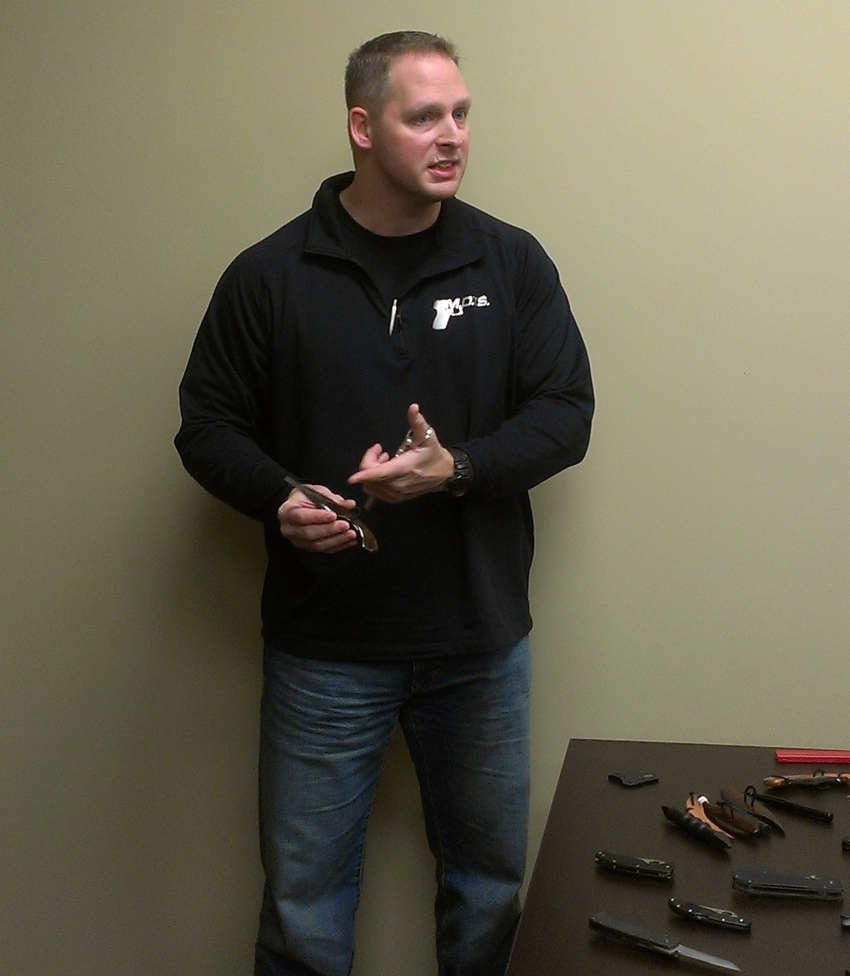
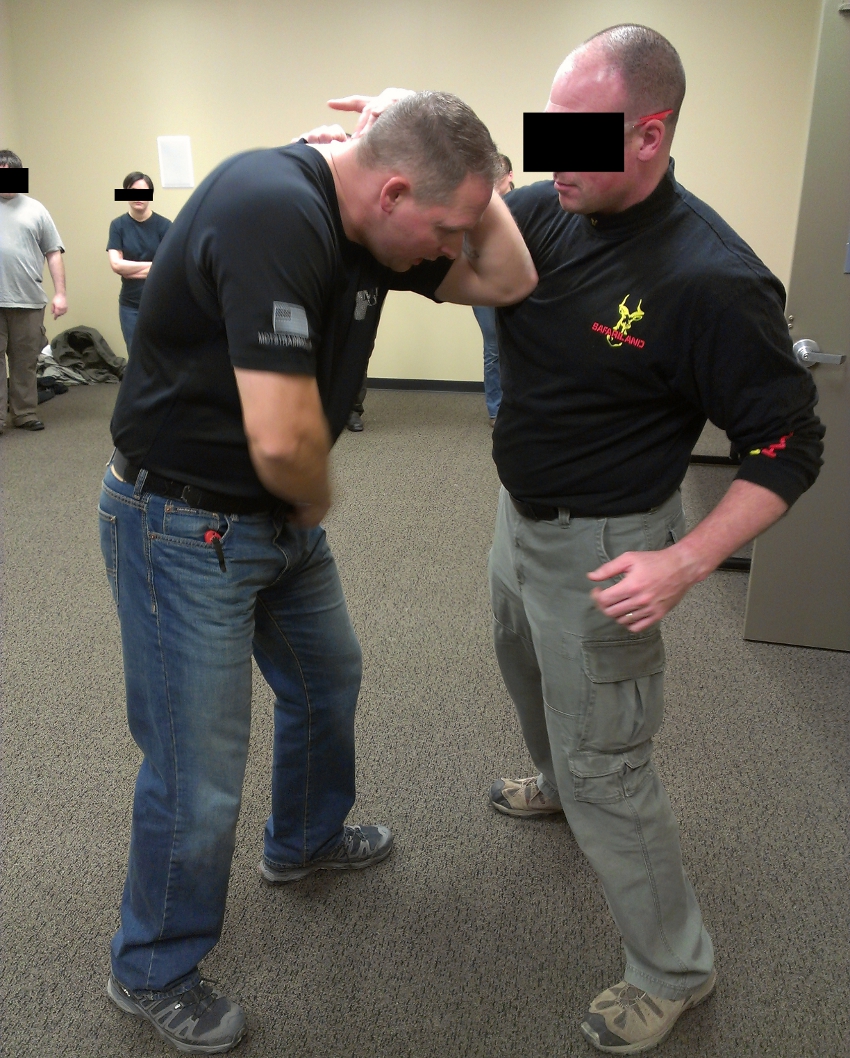
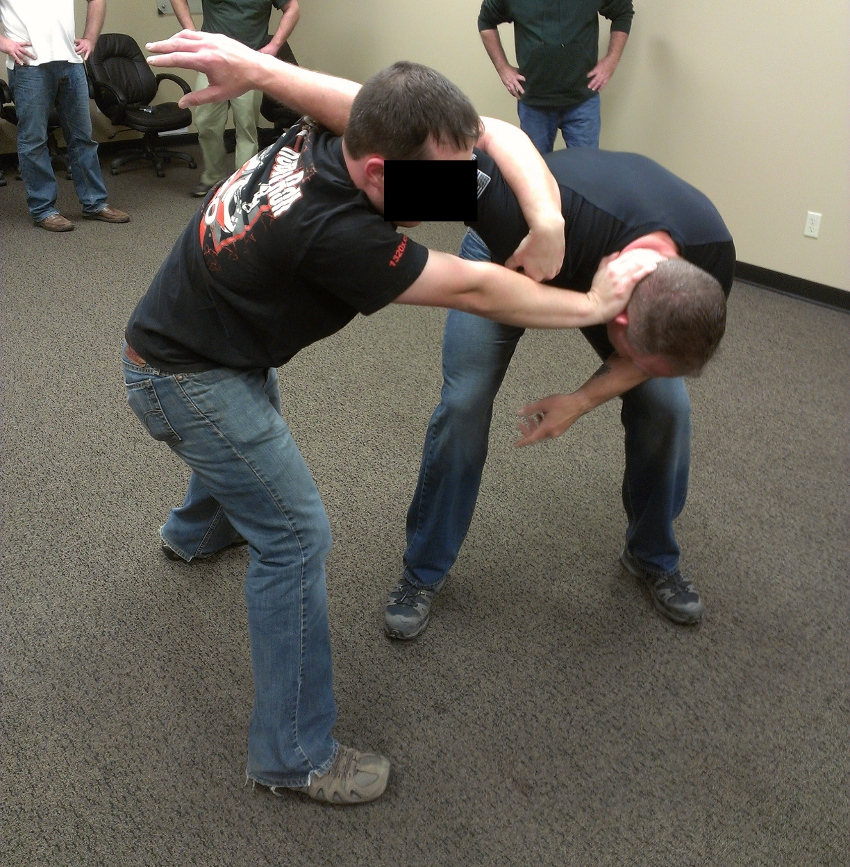
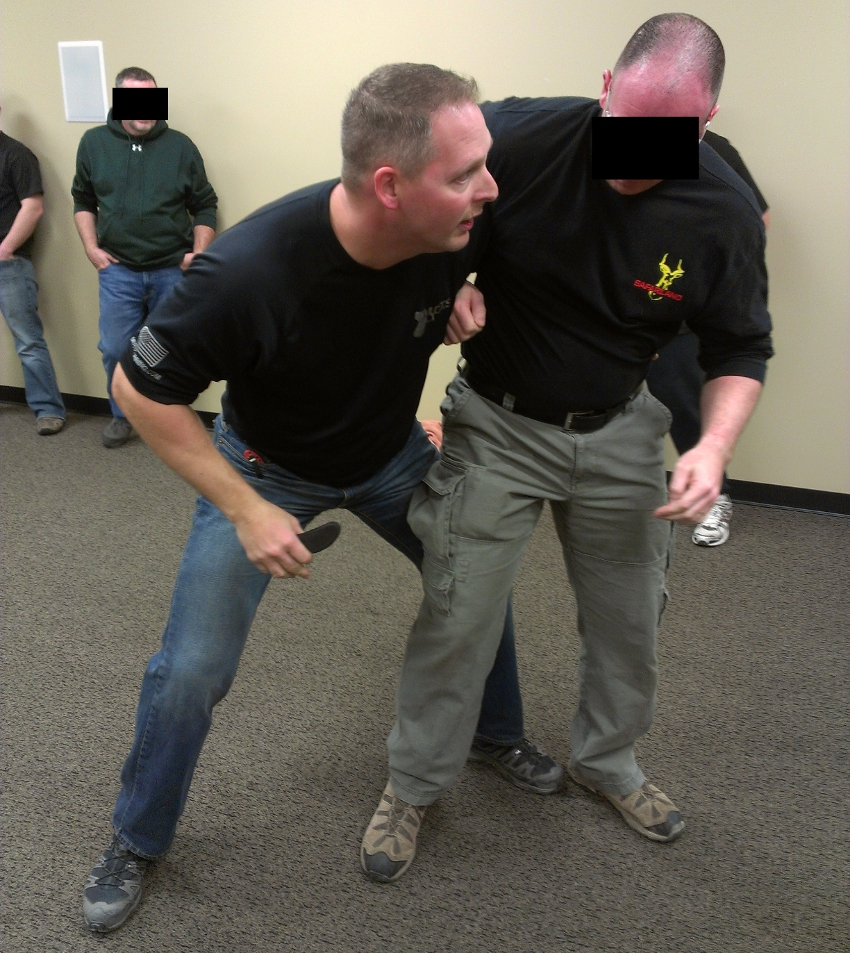
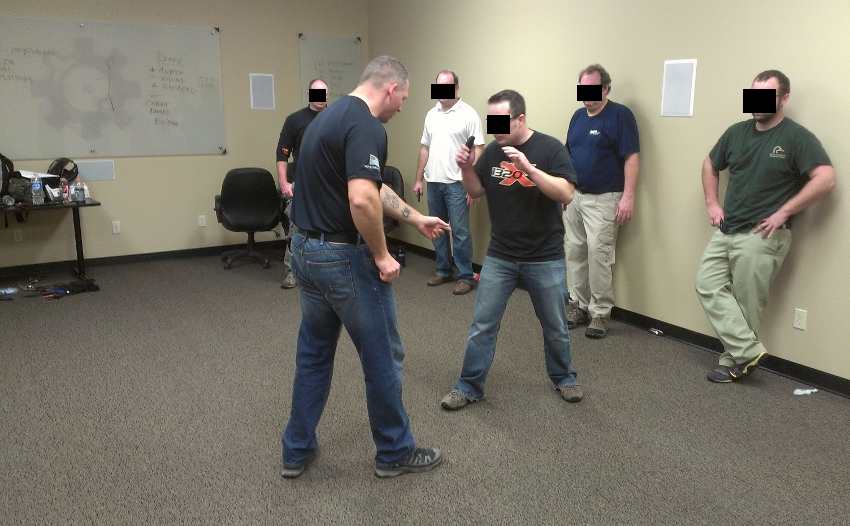
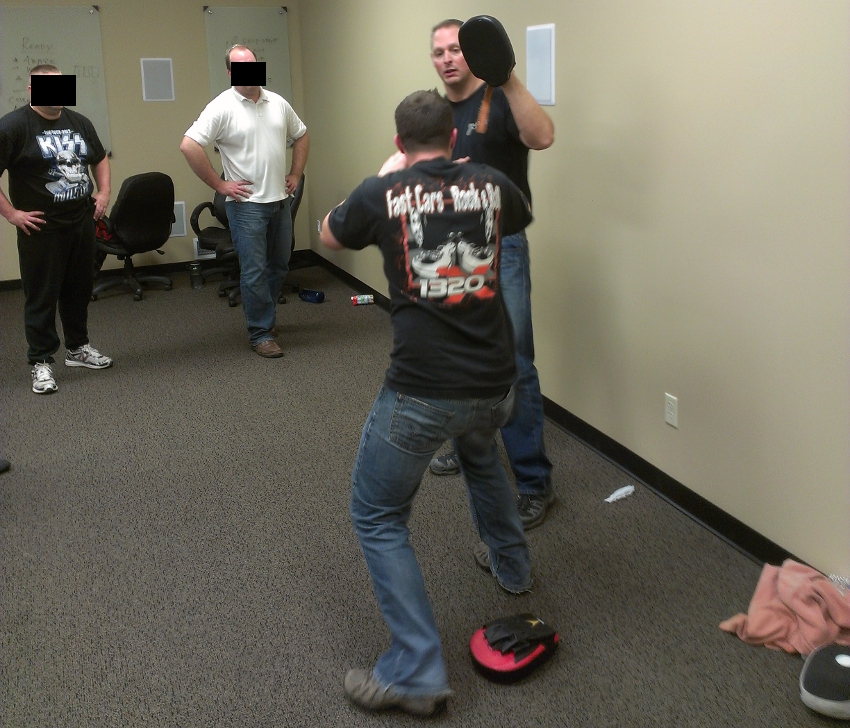
One thought on “MDTS Small Knife Skills, 8 December 2012”